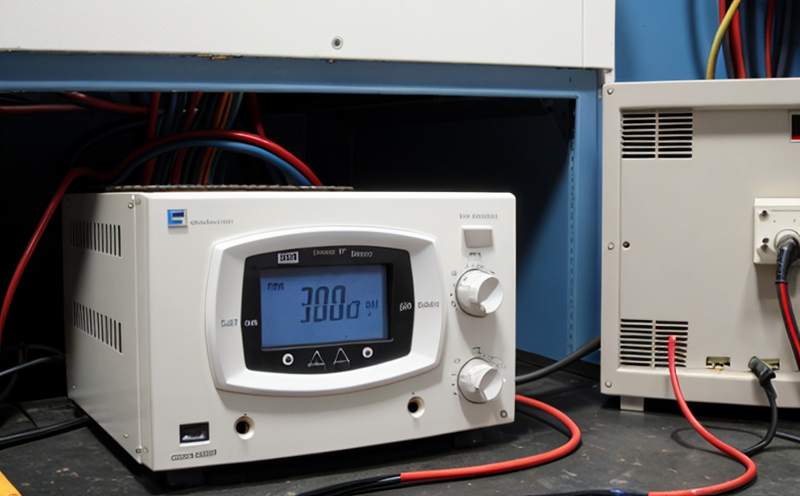EN 61000 6-3 EMC Emission Testing for Residential Lighting
The European standard EN 61000-6-3 is a key document in the realm of Electromagnetic Compatibility (EMC) testing, particularly concerning electromagnetic emissions from residential lighting devices. This standard plays a critical role in ensuring that electrical and electronic equipment do not generate excessive levels of electromagnetic interference which could disrupt other electronic systems.
Residential lighting fixtures are essential components in our daily lives, but they can also emit harmful electromagnetic interference if not designed correctly. Compliance with EN 61000-6-3 ensures that these devices operate safely and reliably within the specified frequency ranges without causing undue interference to other devices.
The standard covers a wide range of lighting products including incandescent lamps, fluorescent lamps, LED lights, and various types of decorative lighting. The testing procedures outlined in this document are essential for manufacturers who wish to ensure their products meet regulatory requirements across Europe.
Our laboratory specializes in providing comprehensive EMC emission testing services tailored specifically towards residential lighting fixtures according to EN 61000-6-3. Our team of experts uses state-of-the-art equipment and follows international best practices ensuring accurate, reliable results every time.
To begin with, our process involves detailed preparation of the specimens which includes cleaning any external surfaces, ensuring all components are properly assembled, and connecting them to appropriate power sources. Once prepared, we conduct a series of tests designed to evaluate how much electromagnetic interference your product emits under typical operating conditions.
These emissions can be measured at different frequencies depending on the type of lighting being tested; typically between 150 kHz and 30 MHz for general lighting fixtures. We use specialized equipment such as far-field antennas, spectrum analyzers, and near-field probes to capture accurate measurements.
- Far-Field Antennas: Used to measure emissions from the fixture over a distance, this helps assess whether the emitted signals are within acceptable limits.
- Spectrum Analyzers: These instruments provide detailed frequency spectrum data which allows us to pinpoint specific frequencies where potential issues may arise.
- Near-Field Probes: Ideal for close-range measurements, these probes help identify any localized sources of interference that could impact nearby devices.
The results from our tests are then compared against the requirements specified in EN 61000-6-3. If your product exceeds permissible limits, corrective actions must be taken before re-testing can occur. Our experienced team works closely with clients to identify root causes and implement necessary modifications.
Compliance with this standard not only protects consumers from harmful electromagnetic interference but also enhances the reputation of manufacturers who adhere strictly to international standards. It demonstrates a commitment to quality, safety, and environmental responsibility which can significantly enhance market competitiveness.
In conclusion, EN 61000-6-3 EMC emission testing is an indispensable step in ensuring that residential lighting fixtures function safely and efficiently within the confines of regulatory frameworks. By partnering with our laboratory, you ensure your product meets stringent quality standards while paving the way for successful market entry.
Benefits
Compliance with EN 61000-6-3 brings numerous advantages to manufacturers of residential lighting fixtures. Here’s why it matters:
- Avoid Legal Penalties: Non-compliance can lead to hefty fines and legal challenges, especially if your product interferes with other devices used by consumers.
- Promote Consumer Safety: By ensuring that your lighting fixtures do not generate excessive electromagnetic interference, you protect both users and nearby electronic equipment from potential hazards.
- Enhance Product Reputation: Adhering to international standards such as EN 61000-6-3 reflects well on your brand’s commitment to quality and safety. This can improve customer trust and loyalty.
- Facilitate Market Access: Many countries have adopted these standards, making compliance a prerequisite for market entry in those regions.
Quality and Reliability Assurance
Ensuring the quality and reliability of residential lighting fixtures is paramount. Here are some key aspects we focus on during our testing:
- Consistent Quality Control: Our laboratory maintains strict adherence to ISO 9001 standards, ensuring that all tests are conducted consistently.
- Advanced Equipment: Utilizing cutting-edge instrumentation like far-field antennas and spectrum analyzers guarantees precise measurements.
- Data Accuracy: All data collected is rigorously reviewed to ensure accuracy. Any discrepancies are investigated thoroughly.
- Certification Compliance: We stay updated with the latest amendments and interpretations of EN 61000-6-3, ensuring our clients receive compliant results.
Competitive Advantage and Market Impact
Compliance with EN 61000-6-3 offers more than just regulatory compliance; it provides a competitive edge in the market:
Enhanced Product Differentiation: In an increasingly crowded market, meeting or exceeding these standards sets your product apart from competitors.
Better Customer Satisfaction: By ensuring that your products do not cause interference issues, you improve overall customer satisfaction and reduce warranty claims.
Innovation Support: Adhering to international standards encourages continuous improvement in design and functionality.





